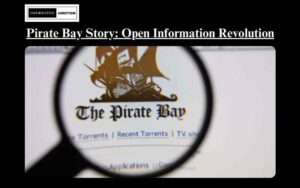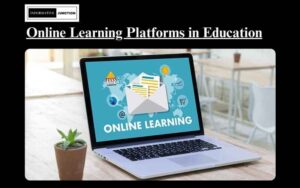In the rapidly evolving landscape of education and professional development, the role of learning management software (LMS) has become pivotal. As industries embrace digital transformation, organizations seek robust solutions to streamline training processes, enhance employee skills, and adapt to the dynamic learning needs of the modern workforce.
Understanding Learning Management Software
Defining Learning Management Software: A Comprehensive Overview
Learning Management Software (LMS) is a dynamic platform designed to simplify the administration, delivery, and tracking of educational content. Whether utilized in academic institutions or corporate settings, its versatility makes it a cornerstone for effective learning strategies.
The Evolution of Learning Management Software: From Basics to Cutting-Edge Solutions
Since its inception, Learning Management Software has evolved from basic course delivery systems to sophisticated platforms offering personalized learning experiences. Today, LMS incorporates features like artificial intelligence, gamification, and microlearning to meet the diverse needs of learners and organizations.
Benefits of Learning Management Software
1. Centralized Learning Hub
Efficiency at Scale: Unifying Learning Resources
One of the primary advantages of LMS is its ability to centralize learning resources. Instead of disparate sources, all educational materials, from training modules to multimedia content, are housed in a single, accessible hub. This streamlines content management, ensuring consistency and ease of access for learners.
Improving Accessibility: Anytime, Anywhere Learning
The accessibility of learning materials is a game-changer. With LMS, employees can engage with training materials at their convenience, breaking the traditional barriers of time and location. This flexibility is particularly crucial in the era of remote work and global collaborations.
2. Flexibility and Accessibility
Anytime, Anywhere Learning: Breaking the Boundaries
Learning Management Software transcends geographical constraints, enabling learners to access materials at their convenience. With the rise of remote work and global collaborations, this feature is particularly valuable. Training becomes a seamless experience, fostering a culture of continuous learning.
Enhancing Engagement: Interactive Learning Modules
Modern LMS often includes interactive features such as quizzes, discussion forums, and multimedia elements, enhancing learner engagement. These interactive components not only make learning enjoyable but also contribute to better retention of information.
3. Progress Tracking and Analytics
Data-Driven Insights: Enhancing Performance Evaluation
LMS provides administrators and instructors with robust analytics tools. Monitoring learner progress, assessing engagement, and identifying areas for improvement become efficient tasks. This data-driven approach empowers organizations to adapt and optimize their training programs continually.
Customized Reporting: Tailoring Insights to Organizational Goals
Advanced reporting functionalities in LMS allow organizations to generate customized reports aligned with their specific goals. Whether tracking compliance, skill development, or overall training effectiveness, LMS analytics offer actionable insights for informed decision-making.
4. Personalized Learning Paths
Tailored Development: Meeting Individual Needs
Every learner is unique, and LMS acknowledges this by allowing the creation of personalized learning paths. Whether employees are at different skill levels or pursuing diverse career trajectories, the software adapts to their needs, ensuring a more effective and engaging learning experience.
Adaptive Learning: Responding to Individual Progress
Some modern LMS platforms incorporate adaptive learning technologies. These technologies assess an individual’s progress and dynamically adjust the learning path to suit their strengths and weaknesses, maximizing the efficiency of the training process.
Implementing Learning Management Software
1. Integration with Existing Systems
Seamless Integration: Enhancing Organizational Workflow
When implementing learning management software, integration with existing systems is crucial. Whether connecting with HR software for streamlined onboarding or syncing with performance management tools, seamless integration ensures a cohesive organizational workflow.
API Integration: Connecting LMS with Key Organizational Tools
Application Programming Interface (API) integration allows LMS to communicate with other software applications. This connectivity ensures that data flows smoothly between different tools, reducing manual effort and enhancing the overall efficiency of the organization.
2. User-Friendly Interface and Training
Empowering Users: Ensuring Adoption Success
The success of any LMS implementation hinges on user adoption. A user-friendly interface, coupled with comprehensive training programs, ensures that learners and administrators alike can harness the full potential of the software. This investment in training pays dividends in the form of increased efficiency and satisfaction.
Training Resources: Maximizing Platform Understanding
Organizations should provide comprehensive training resources, including tutorials, documentation, and user support, to facilitate a smooth transition to the LMS. This proactive approach minimizes resistance to change and accelerates the integration of the software into daily workflows.
Challenges and Solutions in Learning Management Software
1. Overcoming Resistance to Change
Cultural Shifts: Navigating Change Dynamics
Implementing new technology often faces resistance. Acknowledging and addressing this resistance through clear communication, training, and showcasing the tangible benefits of the LMS helps pave the way for a smoother transition.
Change Management Strategies: Building a Culture of Learning
Effective change management strategies involve communication, involvement, and education. By fostering a culture of continuous learning and emphasizing the benefits of the LMS, organizations can overcome resistance and cultivate an environment where employees embrace new technologies.
2. Ensuring Data Security and Compliance
Protecting Information: Prioritizing Security Measures
As organizations handle sensitive data within an LMS, ensuring robust security measures is paramount. This includes encryption, secure authentication processes, and compliance with data protection regulations. Prioritizing data security builds trust and safeguards against potential risks.
Regular Audits: Ensuring Compliance Adherence
Regular audits of the LMS’s security features and compliance measures are essential. These audits help organizations stay abreast of evolving regulations, identify potential vulnerabilities, and demonstrate a commitment to maintaining the highest standards of data protection.
Future Trends in Learning Management Software
1. Artificial Intelligence Integration
Smart Learning: Enhancing Personalization
The future of learning management software lies in the integration of artificial intelligence (AI). AI algorithms can analyze user behavior, recommend personalized learning paths, and even predict future training needs. This not only enhances personalization but also boosts the overall effectiveness of training programs.
AI-Driven Analytics: Predictive Insights for Continuous Improvement
AI-driven analytics can predict trends in employee performance, helping organizations proactively address skill gaps and future training needs. This predictive approach ensures that training initiatives align with evolving business requirements.
2. Gamification and Microlearning
Engagement Strategies: Infusing Fun into Learning
Gamification and microlearning are emerging as powerful engagement tools. By incorporating game elements and breaking down content into bite-sized modules, LMS makes learning more enjoyable and digestible, ultimately increasing retention and participation.
Microlearning Modules: Enhancing Knowledge Retention
Microlearning, with its focus on short, targeted learning modules, caters to the modern learner’s preference for bite-sized information. LMS platforms incorporating microlearning modules can enhance knowledge retention and make learning a continuous, easily integrated part of the workday.
Conclusion: Embracing the Future of Learning
In conclusion, the adoption of learning management software marks a strategic leap towards fostering a culture of continuous learning. From centralized content management to personalized learning paths, the benefits are profound. As organizations navigate the ever-changing landscape of education and professional development, the role of LMS stands as a beacon, guiding the way toward an empowered, adaptive, and highly skilled workforce.
Embrace the future of learning with learning management software and unlock the full potential of your organization.
Read More Informative Blogs on Informative Junction




